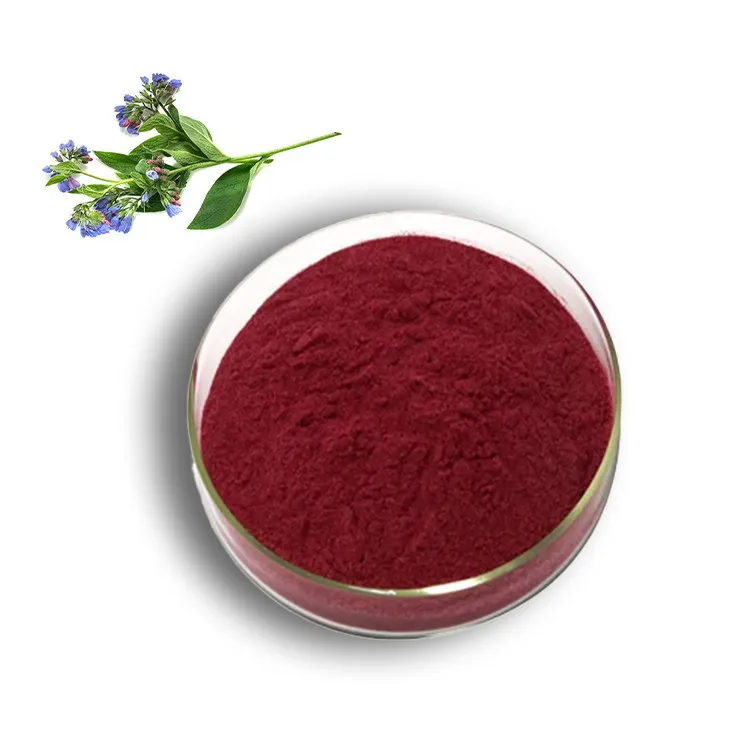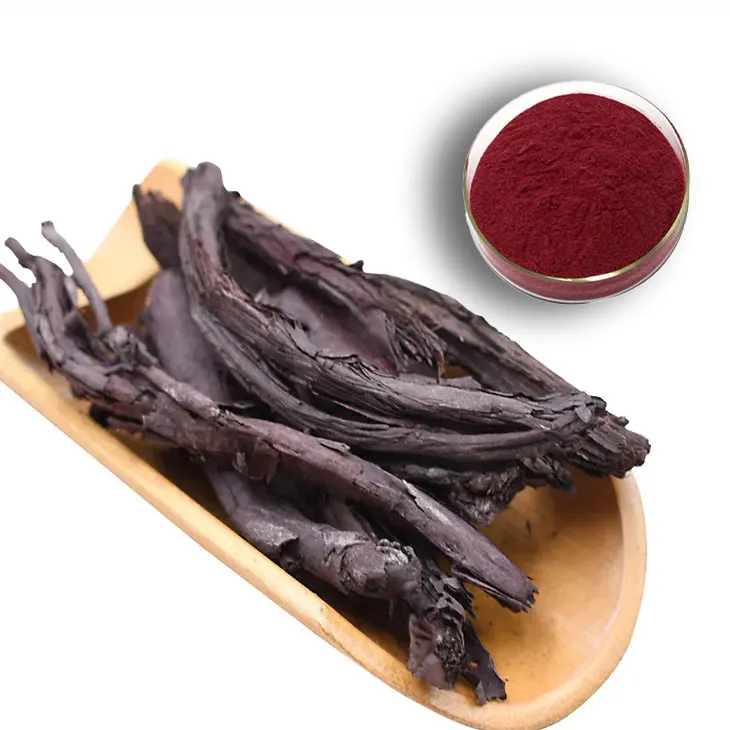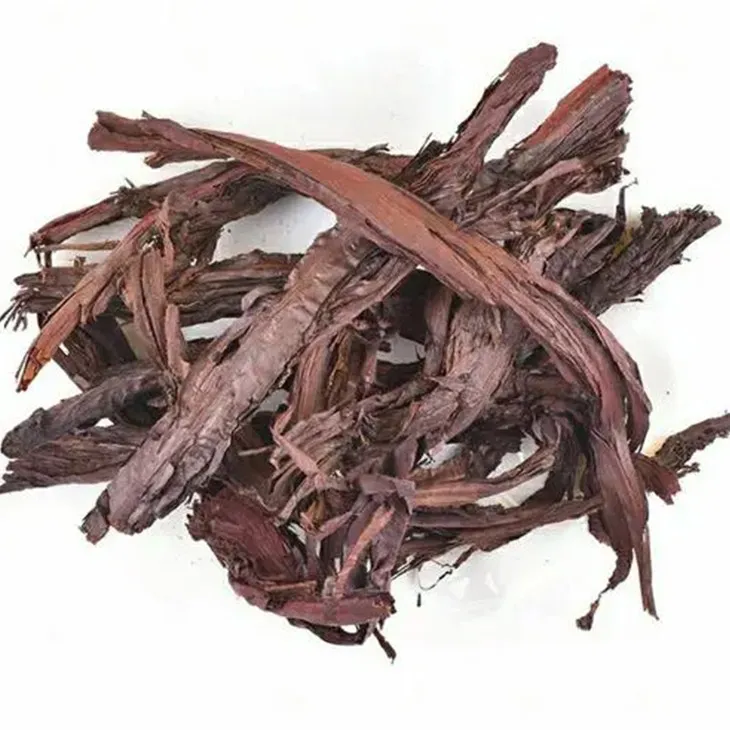- 0086-571-85302990
- sales@greenskybio.com
Active ingredient of shikonin.
2024-11-30

1. Introduction to Shikonin
Shikonin, as a remarkable natural compound, has been increasingly in the spotlight in recent years. It is an active ingredient with a wide range of pharmacological activities that hold great potential in various fields of medicine.

2. Anti - tumor Effects of Shikonin
Targeting Cancer Cells: Shikonin has the ability to target different types of cancer cells. This includes those that are resistant to traditional chemotherapy drugs. For example, in breast cancer cells, it has been shown to interfere with the abnormal growth mechanisms. In pancreatic cancer cells as well, shikonin can penetrate and exert its cytotoxic effects.
Modulating Signaling Pathways: It modulates multiple signaling pathways involved in cell growth, proliferation, and metastasis. For instance, it can influence the PI3K - Akt signaling pathway which is often dysregulated in cancer cells. By doing so, shikonin can control the growth rate of cancer cells. It may also interact with the MAPK signaling pathway, which is crucial for cell proliferation. This modulation helps in preventing the uncontrolled spread of cancer cells.

3. Anti - microbial Action of Shikonin
Disrupting Cell Membranes: Shikonin can disrupt the cell membrane integrity of bacteria and fungi. In the case of bacteria, it can target the lipid bilayer of the cell membrane. For example, with Gram - positive bacteria like Staphylococcus aureus, shikonin can cause leakage of intracellular components by damaging the membrane. Similarly, for fungi such as Candida albicans, it can also interfere with the integrity of the fungal cell membrane, thereby inhibiting their growth and reproduction.

4. Role in Wound Healing
Promoting Cell Migration: Shikonin plays an important role in wound healing. It promotes cell migration, which is a crucial step in the process of closing a wound. Fibroblasts, for example, are cells involved in wound healing, and shikonin can stimulate their movement towards the site of injury.
Activating Growth Factors: It probably promotes tissue regeneration by activating certain growth factors. Growth factors like EGF (Epidermal Growth Factor) and VEGF (Vascular Endothelial Growth Factor) are important for the regeneration of skin and blood vessels respectively at the wound site. Shikonin may enhance the activity of these growth factors, thus facilitating the overall wound - healing process.
5. Anti - inflammatory Activity of Shikonin
Regulating the Immune Response: Shikonin has anti - inflammatory activity which is beneficial for treating various inflammatory diseases. At the cellular level, it can interact with immune cells such as macrophages. Macrophages play a key role in the inflammatory response. Shikonin can modulate the activation state of macrophages, preventing excessive inflammation.
At the Molecular Level: At the molecular level, shikonin can interfere with the production of inflammatory mediators. For example, it can reduce the synthesis of cytokines like TNF - α (Tumor Necrosis Factor - α) and IL - 6 (Interleukin - 6). These cytokines are often over - produced in inflammatory conditions and contribute to the pathogenesis of many diseases. By reducing their production, shikonin helps to alleviate inflammation.
6. Future Prospects of Shikonin Research
Drug Development: The diverse pharmacological activities of shikonin make it a promising candidate for drug development. Researchers are exploring ways to develop shikonin - based drugs. For example, they are trying to optimize the formulation of shikonin to improve its bioavailability. This could lead to the development of more effective anti - cancer, anti - microbial, and anti - inflammatory drugs.
Combination Therapies: Another aspect of future research is exploring combination therapies. Shikonin could be combined with other drugs to enhance its efficacy. For instance, in cancer treatment, it could be combined with traditional chemotherapy drugs to overcome drug resistance. In anti - microbial therapy, it could be combined with antibiotics to combat multi - drug - resistant bacteria.
Mechanism Elucidation: Although much is known about the effects of shikonin, further research is needed to fully elucidate its mechanisms of action. Understanding the exact molecular targets and signaling pathways involved will help in better exploiting its therapeutic potential. For example, more in - depth studies on how shikonin modulates the immune response at the molecular level could lead to the development of more targeted anti - inflammatory therapies.
FAQ:
What are the main anti - tumor mechanisms of shikonin?
Shikonin can target different types of cancer cells, including those resistant to traditional chemotherapy drugs. It modulates multiple signaling pathways involved in cell growth, proliferation, and metastasis.
How does shikonin exert its anti - microbial effect?
Shikonin exerts its anti - microbial action by disrupting the cell membrane integrity of bacteria and fungi, which in turn inhibits their growth and reproduction.
What is the role of shikonin in wound healing?
Shikonin promotes cell migration and tissue regeneration in wound healing, probably by activating certain growth factors.
How does shikonin show its anti - inflammatory activity?
Shikonin shows its anti - inflammatory activity by regulating the immune response at the cellular and molecular levels, which is beneficial for treating various inflammatory diseases.
Can shikonin be used alone in cancer treatment?
While shikonin has shown potential in targeting cancer cells, more research is needed to determine if it can be used alone in cancer treatment. Currently, it may be part of a multi - pronged approach in combination with other therapies.
Related literature
- Shikonin: A Review of Its Pharmacological Properties and Therapeutic Potential"
- "The Anti - Tumor Activity of Shikonin: Molecular Targets and Therapeutic Implications"
- "Shikonin in Anti - Microbial Therapy: Mechanisms and Applications"
- ▶ Hesperidin
- ▶ citrus bioflavonoids
- ▶ plant extract
- ▶ lycopene
- ▶ Diosmin
- ▶ Grape seed extract
- ▶ Sea buckthorn Juice Powder
- ▶ Beetroot powder
- ▶ Hops Extract
- ▶ Artichoke Extract
- ▶ Reishi mushroom extract
- ▶ Astaxanthin
- ▶ Green Tea Extract
- ▶ Curcumin Extract
- ▶ Horse Chestnut Extract
- ▶ Other Problems
- ▶ Boswellia Serrata Extract
- ▶ Resveratrol Extract
- ▶ Marigold Extract
- ▶ Grape Leaf Extract
- ▶ blog3
- ▶ blog4
-
The best nutmeg extract in nature.
2024-11-30
-
Organic Vitamin B9 Powder Factory.
2024-11-30
-
Chinese Dandelion Root Extract Factories.
2024-11-30
-
Bulk purchase of okra extract.
2024-11-30
-
Chinese melatonin factories.
2024-11-30
-
Certified organic kidney bean extract.
2024-11-30
-
Pueraria Lobata Extract
2024-11-30
-
Almond Extract Powder
2024-11-30
-
Sophora Flavescens Root Extract
2024-11-30
-
Centella Asiatica Extract
2024-11-30
-
Reishi mushroom extract
2024-11-30
-
Moringa powder
2024-11-30
-
Plantain extract
2024-11-30
-
Grapefruit Seed Extract Powder
2024-11-30
-
Calendula Extract
2024-11-30
-
Cat Claw Extract
2024-11-30





















